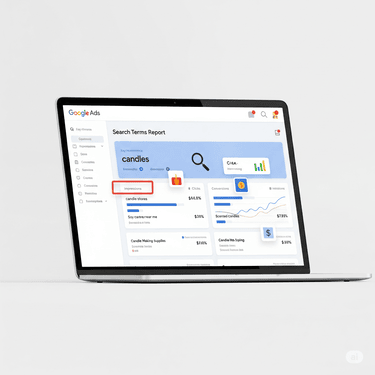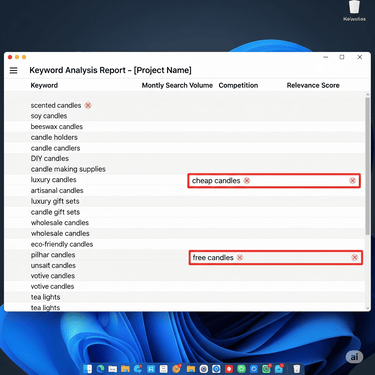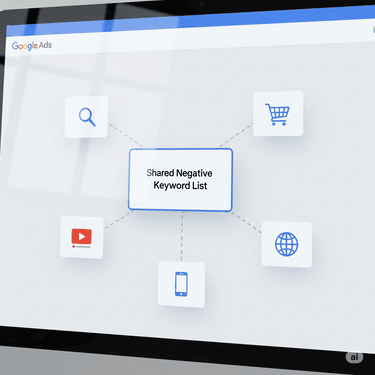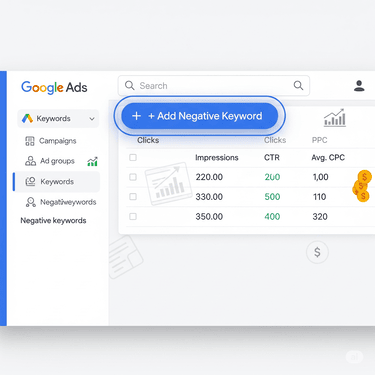Negative Keywords in Google Ads: The Ultimate Beginner’s Guide
Learn what negative keywords in Google Ads are, why they matter, and how to add negative keywords in Google Ads step‑by‑step. Avoid wasted spend and boost ROI with smart PPC tips.

Running Google Ads is one of the fastest ways to get customers online, but here’s the catch: many businesses waste a big chunk of their ad budget on irrelevant clicks. This is where negative keywords in Google Ads come to the rescue. By using them correctly, you can stop your ads from showing up for the wrong audience, save money, and boost your return on investment.
In this guide, we’ll break down what negative keywords in Google Ads are in a well explained in manner which is beginner-friendly to understand.
What Are Negative Keywords in Google Ads?
Negative keywords are search terms you don’t want your ads to show for. When you add them to your campaigns, Google Ads will prevent your ads from appearing when someone searches using those terms.
For example:
- If you sell premium Candles, you can add “cheap” or “free” as negative keywords. This way, people searching for “cheap leather bags” won’t see your ad saving you money on irrelevant clicks.
Using negative keywords ensures your ad spend is used only on searches that are more likely to convert.
Why Are Negative Keywords Important?
Think of Google Ads as a busy marketplace. Without filtering, your ad might show up to people who have no intention of buying your product. Negative keywords act as a filter that:
Eliminates irrelevant clicks – stops you from paying for useless traffic.
Improves click-through rate (CTR) – because only the right people see your ads.
Boosts conversions – your ads reach people genuinely interested in your offer.
Increases Quality Score – better ad relevance can lower your cost per click (CPC).
Types of Negative Keywords You Can Use
When you set negative keywords in Google Ads, you have to tell Google how strictly to block your ad from showing. These are called match types—and they work differently depending on how precise you want your filters to be.
Let’s break it down:
Real-World Example: Selling Handmade Candles
Let’s say you run an online store selling premium handmade candles. You don’t want to attract bargain hunters.
So, you add “cheap candles” as a negative keyword—but the match type you choose will change how strict Google is.
1. Broad Match Negative
- Blocks: cheap candles, candles cheap, cheap soy candles
- Allows: affordable wax candles, budget-friendly home décor
- Use if: You want a wide net that filters out most searches involving “cheap” and “candles”
2. Phrase Match Negative
- Blocks: buy cheap candles online, cheap candles for Diwali
- Allows: cheap scented wax, candles cheap deals
- Use if: You want to block a specific phrase, but still show for looser combinations
3. Exact Match Negative
- Blocks: cheap candles only
- Allows: cheap candles online, best cheap candles for gifts
- Use if: You only want to block one specific search query
Which One Should You Use?
- Start with Broad for obvious irrelevant themes like “free,” “cheap,” “jobs”
- Use Phrase or Exact to refine further as you monitor your Search Terms Report
- Combine different match types to get the best of both reach and relevance
How to Add Negative Keywords in Google Ads
Now that you know what negative keywords in Google Ads are, let’s go step by step on how to add them—explained with real examples.
Step 1: Go to Your Search Terms Report

This report shows you the exact terms people typed in before clicking your ad.
Example: You sell premium handmade candles, but you see clicks coming from searches like cheap candles online and DIY candle making.
Step 2: Identify Irrelevant Search Queries

Look for search terms that don’t match your business goals but are still costing you money.
Example: You notice terms such as:
- cheap candles (bargain hunters, not your target audience)
- candle jobs near me (people looking for employment, not to buy)
- DIY candle kit (people who want to make candles, not buy them)
Step 3: Add as Negative Keywords

Once you’ve identified the irrelevant terms:
- Select the keywords.
- Click “Add as Negative Keyword.”
- Choose whether to apply them at the ad group, campaign, or account level.
Example: If you add cheap candles as a campaign-level negative keyword, all ads in that campaign will stop showing for searches containing that term.
Step 4: Use Shared Negative Keyword Lists

If you manage multiple campaigns, create shared negative keyword lists for terms you always want to block.
Example: You create a shared list with:
- cheap
- free
- jobs
- DIY
You then apply this list to every campaign you run for candles (Diwali candles, wedding candles, corporate gifting candles). This saves time and keeps everything consistent.
Best Practices for Using Negative Keywords
- Review search terms regularly – at least once a week for new irrelevant queries.
- Avoid being too aggressive – adding too many negatives can reduce reach.
- Start with obvious terms – e.g., “free,” “DIY,” “jobs,” or competitor names you don’t want to target.
- Use all three match types to refine your targeting strategy.
How Web Pundit Helps Businesses With Google Ads
Managing negative keywords sounds simple—but in reality, it requires constant monitoring, analysis, and updates. Most entrepreneurs don’t have the time to regularly review search terms, optimize match types, or build shared negative keyword lists.
That’s where The Web Pundit comes in.
- We set up and manage Google Ads campaigns end-to-end—from keyword research to ad copywriting.
- We continuously track your search terms report, adding or removing negative keywords to reduce wasted spend.
- We use advanced strategies like shared lists, campaign-level optimization, and bid adjustments to get you better ROI.
Want to know exactly how a PPC agency can boost your business growth?
Read our full blog: Top 5 Ways a PPC Agency in Bangalore Can Actually Help You Grow
Our goal is simple—help you get more qualified leads while spending less.
[Book a Free Consultation with Web Pundit Today!]
FAQs About Negative Keywords

